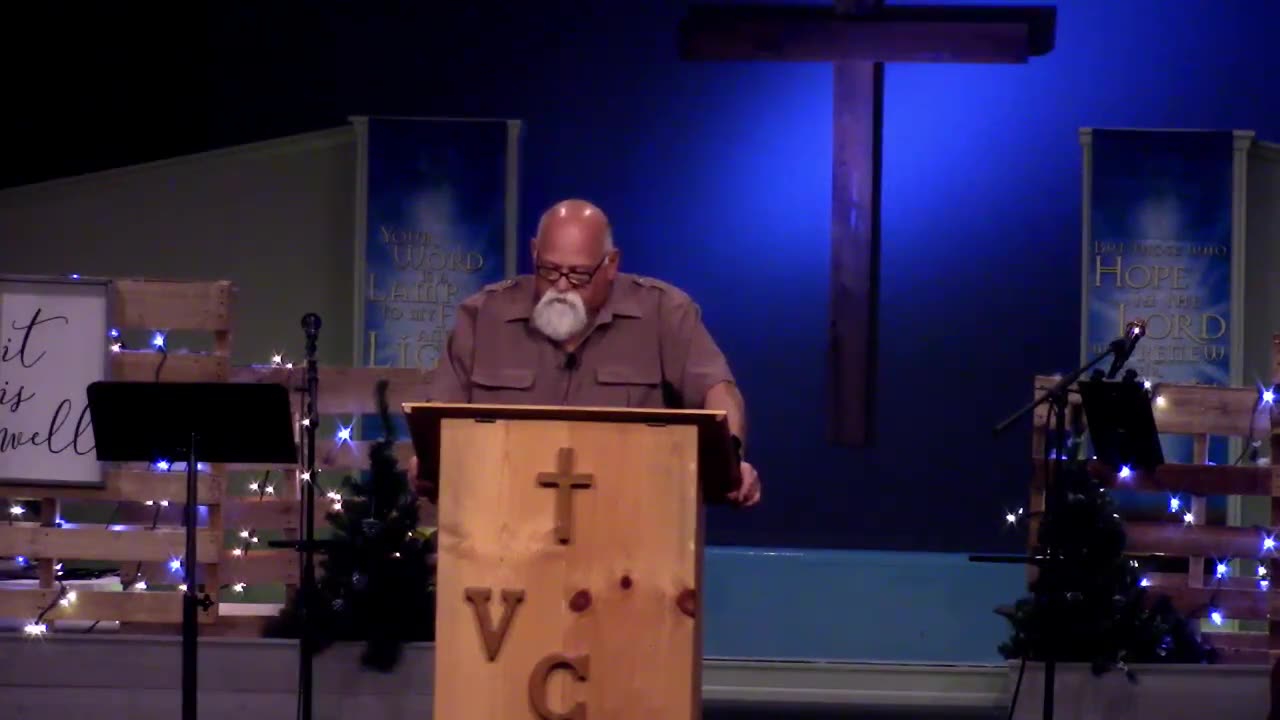Premium Only Content

Without the Shedding of Blood - Jesus's Redemption of Mankind
In this part of Chapter 9, Pastor Martin Saine teaches on the contrast between the Old Covenant's sacrificial system and the superior sacrifice of Christ in the New Covenant. He discusses the symbolic nature of the Old Covenant's rituals, emphasizing their inability to cleanse the conscience or bring about true inner transformation.
The concept of redemption is introduced, highlighting the uniqueness of Christ's sacrifice and the eternal redemption it brings. The blood of Christ is contrasted with the temporary purification achieved by the blood of bulls, goats, and the ashes of a red heifer in the Old Covenant. The author argues that Christ's blood, offered without spot to God, cleanses the conscience from dead works and serves the living God.
The term "redemption" is explored, emphasizing its occurrence only three times in the Bible, particularly in Luke 1:68, Luke 2:38, and Hebrews 9:12. The discussion delves into the ritual of the red heifer in Numbers 19, connecting it to Hebrews 9:13.
The role of Christ as the Mediator of the New Covenant is discussed, emphasizing His death for the redemption of transgressions under the first covenant. The retroactive and eternal nature of this redemption is highlighted.
The author explains the necessity of blood in the purification process under the Old Covenant, connecting it to the dedication of the first covenant with blood. The sprinkling of blood on the book, people, and the tabernacle is detailed, drawing parallels to the obedience and sprinkling of the blood of Jesus mentioned in 1 Peter 1:2.
The significance of the blood of the covenant and its commandment by God is explored, linking it to Exodus 24:1-8. The author emphasizes the symbolic nature of the Old Covenant's sprinkling of blood and contrasts it with the powerful reality of Christ's blood in the New Covenant.
Hebrews 9 concludes by discussing the necessity of shedding blood for remission of sins according to the law and the purification of heavenly things with better sacrifices. Christ's entry into the true heavenly sanctuary and His once-for-all sacrifice are highlighted, concluding with the promise of His second coming for salvation. The appointment of men to die once and face judgment is paralleled with Christ's one-time offering to bear the sins of many. The anticipation of Christ's second coming is mentioned, bringing hope for salvation to those who eagerly wait for Him.
-
 1:00:40
1:00:40
Bek Lover Podcast
1 day agoKamala Will Be President? Trump In Trouble & More Strange News Podcast
21.9K5 -
 48:44
48:44
PMG
17 hours ago $6.89 earned"Hannah Faulkner and Bishop Leon Benjamin | REVIVAL IN AMERICA"
18.9K1 -
 41:55
41:55
Man in America
16 hours ago🔴 LIVE: The Cabal’s Most Powerful Weapon is COLLAPSING
115K75 -
 6:26:01
6:26:01
Jerry After Dark
16 hours agoJerry After Dark: Carnival Games
128K5 -
 3:55:04
3:55:04
ThatStarWarsGirl
12 hours agoTSWG LIVE: Big NEWS! Plus Reacting to Woke Meltdowns!
115K23 -
 8:02:46
8:02:46
FusedAegisTV
13 hours ago『AST lvl 100』Tuesday Raid & Rant | Final Fantasy XIV | Patch 7.1 Day of Reckoning!
78.4K2 -
 59:17
59:17
Matt Kohrs
14 hours agoRumble's Q3 Recap & What's Next w/ CEO Chris Pavlovski
97.9K30 -
 1:43:47
1:43:47
Adam Does Movies
18 hours ago $29.08 earnedGladiator II Early Reviews + Tom Cruise Stans Glen Powell + Freddy Krueger - Movie News LIVE!
88.4K5 -
 2:24:03
2:24:03
WeAreChange
14 hours agoTrump Creates Department Of Government Efficiency With Elon And Vivek!
146K102 -
 2:10:32
2:10:32
Slightly Offensive
15 hours ago $31.81 earnedGET READY: Civil Unrests ERUPTS As Trump Resistance 2.0 EMERGES
82.9K85